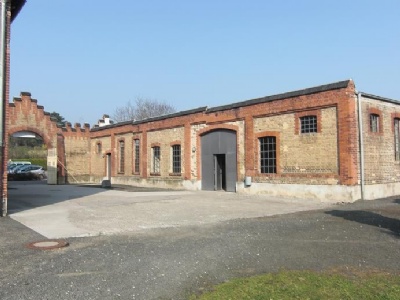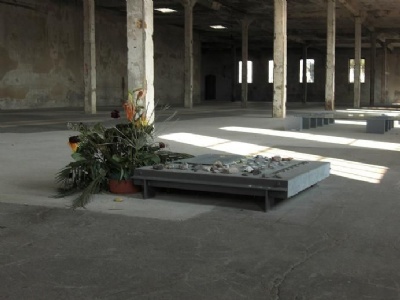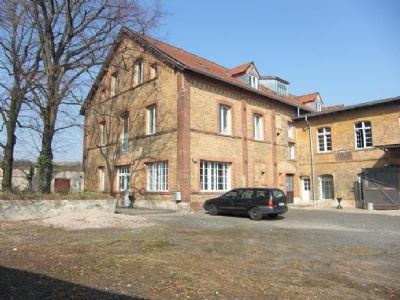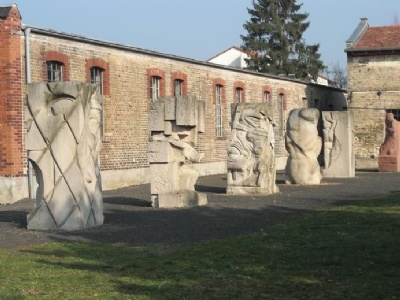Osthofen
Following the Berlin Reichstag fire, February 1933, several concentration camps and protective detention centres were set up around Germany, where political opponents to the Nazis were arbitrarily arrested and imprisoned. In Osthofen, about sixty kilometres south of Frankfurt, a concentration camp was set up in an old paper factory. The camp opened in March 1933 and was the first concentration camp established in the state of Hesse. The camp was officially opened on May 1, 1933. It was mainly political opponents to the Nazis who were imprisoned in the camp, but also homosexuals, Jehovah’s witnesses, trade unionists, gypsies and a few Jews. The prisoners were forced to work with various production, but the conditions were much milder compared to the war years. The camp only existed for 14 months and during this period no prisoners were murdered but several were beaten. Several of the prisoners were later murdered when they ended up in other camps. After the camp was dismantled, a furniture factory was established.
Current status: Preserved with museum (2011).
Address: Ziegelhüttenweg 38, 675 74 Osthofen.
Get there: Car.
Follow up in books: Kogon, Eugen: The Theory and Practice of Hell: The German Concentration Camps and the System Behind Them (2006).






The camp/museum was a positive surprise as it is completely intact and has a good balance between the old and the new. The lack, just as in many other German museums, is that the English information is inadequate. Osthofen was not one of the larger or worse concentration camps, the absence of regular executions and gas chambers makes the camp, in comparison with other larger and famous camps, fall into oblivion. Had the camp been located in Eastern Europe, the camp would probably have been demolished or used for other purposes without any information whatsoever. But the camp was in Germany and Germany still bears a collective guilt to the outside world and therefore politically impossible to override. Osthofen is to the state of Hessen what Dachau is to the state of Bavaria, a symbol of the Nazi terror on which great resources are invested.